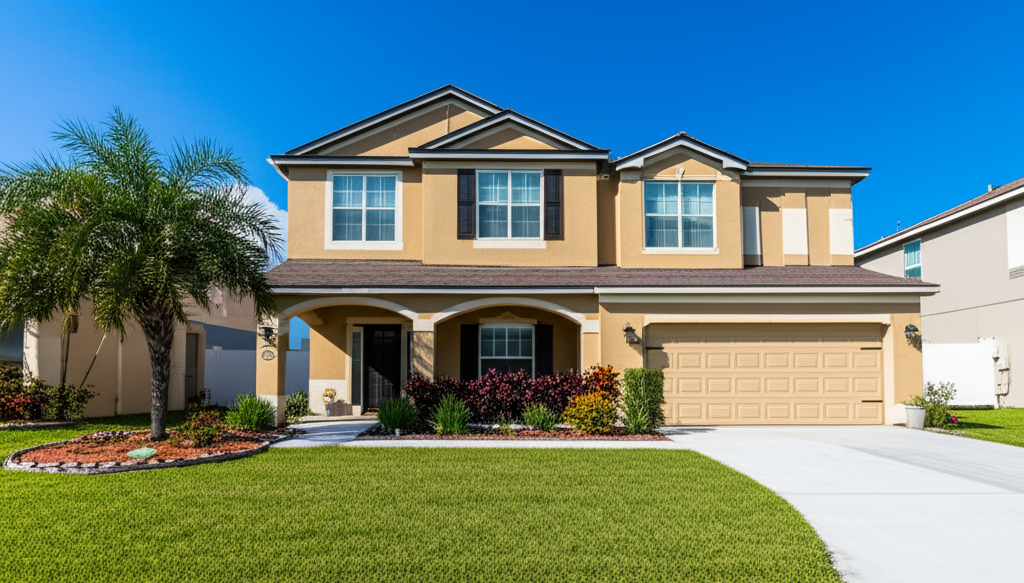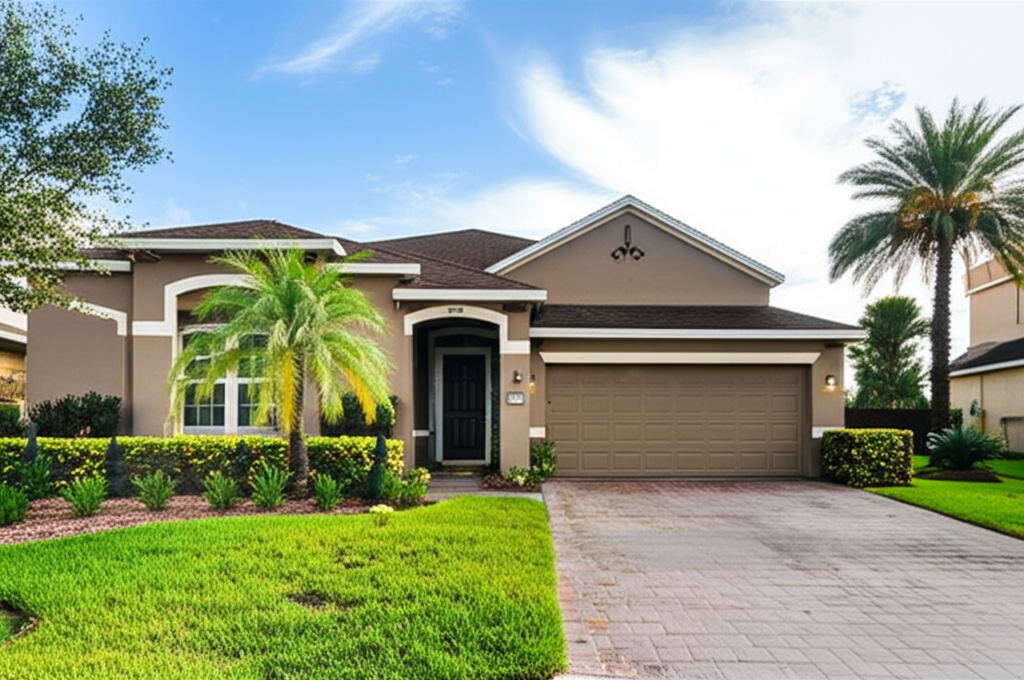2025 Real Estate Market Update: How to Buy Confidently This Year
Buying a home in 2025 means navigating a market that’s steadier than the frenzied peak years but still full of moving parts—mortgage rates, insurance costs, inventory levels, new construction incentives, and shifting local dynamics. The good news: with the right strategy and a clear understanding of today’s conditions, you can make a smart purchase without feeling rushed or overwhelmed. This guide distills what’s different in 2025 and how to adjust your approach so you land the right home, at the right payment, with fewer surprises.
Where the Market Stands Right Now
Broadly, 2025 is a “normalizing” year. Prices and competition vary widely by location and price segment, but the national picture looks calmer than the bidding-war era and less tense than the rate-shock period that followed. Mortgage rates remain higher than the ultra-low levels of 2020–2021 but are generally below their late-2023 peaks. That means affordability is still the main challenge for many buyers, yet opportunities are improving—particularly in neighborhoods with longer days on market or among builders looking to move finished inventory.
Inventory has gradually loosened as more homeowners accept that rates may not return to prior lows and choose to move for life reasons (job changes, household formation, downsizing). New construction is playing a larger role than in past cycles, offering “quick move-in” homes and rate incentives. Meanwhile, some markets remain tight—often close-in suburbs or school districts with limited turnover—so the experience will still differ block by block. The key is to treat 2025 as a skills market: strategy and preparation matter more than timing the perfect interest rate.
Affordability in 2025: Lead With the Monthly Payment
The smartest way to shop this year is payment-first. Instead of starting with a price ceiling, reverse-engineer your target monthly “PITI”—principal, interest, taxes, and insurance—plus HOA dues if applicable. That keeps you focused on what you’ll truly pay each month, not just a headline price.
To see how rate strategies affect payment, consider a $500,000 purchase with 10% down (a $450,000 loan) on a 30-year fixed. At a hypothetical 6.75% rate, principal and interest would be roughly $2,919 per month. If you secure 6.25% instead, that drops to about $2,770—a $149 difference before adding taxes, insurance, and HOA dues.
Now compare a price cut versus a seller credit used to buy down your interest rate. A $10,500 price reduction lowers principal and interest by about $68 per month in this scenario. But a $10,500 seller-paid 2-1 buydown could temporarily reduce your payment by roughly $572 per month in year one and about $293 in year two, before adjusting to the note rate in year three. If you expect to refinance or your income will grow, the buydown could provide far more breathing room early on than a small price cut. Always run the numbers with your lender to see what maximizes your actual monthly comfort.
Fixed, Adjustable, and Assumable Loans: Picking What Fits Your Horizon
Fixed-rate mortgages still offer the most predictability. If you plan to stay put for the long haul and want a stable payment, a fixed rate is a strong default choice. Adjustable-rate mortgages (ARMs) can make sense if you expect to move or refinance within a defined period. If you evaluate an ARM, pay attention to the adjustment caps—the limits on how much the rate can rise at the first adjustment and at each subsequent one—and match the fixed period (for example, 5, 7, or 10 years) to your realistic time horizon in the home.
Assumable mortgages are a unique 2025 opportunity, especially for FHA and VA loans originated when rates were lower. With an assumption, you step into the seller’s existing loan terms. Suppose the seller’s outstanding loan is $300,000 at 3.0% and the home price is $500,000. You’d need to cover the $200,000 gap either in cash or with a second loan. Lenders must approve you, timelines can be longer than a standard closing, and it’s essential that the seller receives a formal release of liability at closing. Done correctly, an assumption can deliver a powerful payment advantage without waiting for market rates to fall.
How to Compete Without Overreaching
In some neighborhoods, you’ll still face multiple offers; in others, you’ll have negotiating room. The goal is to be “patient but decisive.” Get fully pre-underwritten by your lender—not just pre-approved—so you can move quickly with stronger credibility. Consider targeting homes that have sat on the market beyond the first two weekends or that reappear after a canceled escrow; both can signal flexibility.
If you’re looking at new construction, ask about quick move-in homes and builder incentives. Builders in 2025 often prefer to buy down your rate or cover closing costs rather than slash list prices, because incentives are less visible to future appraisals. Those hidden benefits can significantly improve your first-year payment.
When you write an offer, use tools that balance competitiveness with protection. An escalation clause can help in multiple-offer situations, but set a firm ceiling and require proof of competing offers. If the home needs repairs, an inspection credit at closing may be more predictable than asking for the seller to complete work before close. And if you’re stretching in price, be careful with appraisal gap clauses; consider capping the extra cash you’ll contribute if the appraisal comes in low, preserving your emergency funds.
Contingencies, Escrow, and Earnest Money—In Plain English
Contingencies are protections in your purchase contract that let you cancel or renegotiate if defined conditions aren’t met. The most common are inspection, financing, and appraisal contingencies. The inspection contingency allows you to review the home’s condition and request repairs or credits; the financing contingency protects you if your loan approval falls through; the appraisal contingency ties the purchase price to the appraised value.
Escrow is a neutral third party that holds funds and paperwork, making sure money and ownership change hands correctly and on schedule. In some states this role is handled by an attorney; in others, by a title or escrow company. Your earnest money is the deposit you make soon after your offer is accepted to show you’re serious—often 1% to 3% of the price, though it varies by market. If you cancel within your contingency timelines for a covered reason, you typically get your earnest money back. If you default without a contractual excuse, the seller may keep it. Clear timelines and good communication with your agent and lender keep this process smooth.
Insurance, Taxes, and HOAs: The New Underwriting Reality
One of the biggest changes in recent years is the rising importance—and cost—of homeowners insurance, especially in areas with wildfire, hurricane, or flood risk. In 2025, some carriers require proof of roof condition, electrical panel type, or updated plumbing before binding coverage. In flood zones, you may need a separate flood policy. Ask your insurance broker to quote early in your due diligence period and flag any required repairs so you can negotiate credits or timelines with the seller.
Property taxes can also surprise new owners. Many jurisdictions reassess at sale, resetting taxes based on your purchase price. If your area has exemptions or caps (often called homestead exemptions), apply as soon as you’re eligible. In communities with homeowners associations (HOAs), review budgets, reserve studies, and meeting minutes for signs of deferred maintenance or potential special assessments. Condo buildings, in particular, have strengthened reserve requirements in many areas, which is good for safety and long-term value but can raise monthly dues. Build these recurring costs into your affordability analysis from day one.
Down Payment Assistance and First-Time Buyer Options
Many states, counties, and cities refresh their down payment assistance (DPA) programs each year. In 2025, eligibility still typically depends on your income, the purchase price, and whether you’ll live in the home as your primary residence. Some programs offer grants that don’t need to be repaid; others provide forgivable loans after a certain number of years; and some are “silent seconds” that must be repaid when you sell or refinance. Ask your lender to underwrite your file with and without DPA to see trade-offs in rate and closing timelines. Also check for employer-based benefits and community land trust opportunities if you’re in a high-cost market.
Timing the Market vs. Timing Your Life
Seasonality still matters. Spring often brings more new listings—and more competition. Late summer and late fall can offer softer conditions, especially for homes that missed the first wave of buyers. Instead of trying to predict the exact moment rates will dip, focus on: whether the monthly payment works for your budget today; whether you’re likely to stay in the home long enough to justify closing costs; and whether the property itself meets your needs without stretching you too thin. If rates improve later, refinancing can be Plan B; if they don’t, you’ve still bought a home you can comfortably afford.
From a tactical standpoint, secure a pre-underwritten approval, understand your lender’s rate-lock options (30-, 45-, 60-day locks, and whether a float-down is available if rates drop before closing), and shop two to three lenders on the same day to compare apples-to-apples quotes. The right choice isn’t always the lowest advertised rate; underwriting speed, appraisal turn times, and the ability to meet your closing date also matter.
From Offer to Closing: What to Expect
Once your offer is accepted, escrow opens and your earnest money is due. You’ll receive seller disclosures and schedule inspections—general home, plus specialists as needed (roof, sewer line, foundation, mold, or pest, depending on the property). Your lender orders the appraisal while your file moves through underwriting. During this period, avoid large purchases or credit changes that could affect your loan approval.
As you clear contingencies, you’ll review a Closing Disclosure showing your final loan terms and cash to close. Before signing, do a final walkthrough to confirm the home’s condition and that agreed-upon repairs or included items are present. After you sign loan documents, the lender funds the loan and the deed records with the county. That’s when you officially become the owner and get the keys. A smooth close is about staying responsive, keeping your timelines, and asking questions as soon as they arise.
Know When to Walk Away
Falling in love with a house is natural, but the numbers and the inspection findings have to make sense. If the seller refuses to address a serious safety issue, if insurance turns out to be prohibitively expensive, or if the appraisal and financing math no longer align with your budget, it’s okay to step back. The money you’ve spent on inspections is not wasted—it’s the price of avoiding a more expensive mistake. Another home will come along, and you’ll be better prepared for it.
The Bottom Line for 2025 Buyers
This year rewards thoughtful preparation and steady execution. Start with a payment you can live with, not a price you feel pressured to chase. Use seller credits and rate strategies to your advantage, but measure everything against your long-term plans. Consider assumable loans and builder incentives where available, and protect yourself with well-structured contingencies and realistic timelines. Pay close attention to insurance, taxes, and HOA health so your total cost of ownership matches your expectations.
Markets will continue to vary, but well-prepared buyers are finding the right homes without the drama of recent years. Go in informed, surround yourself with a strong lender and agent, and make decisions based on your budget, not the headlines. That’s how you buy with confidence in 2025.




